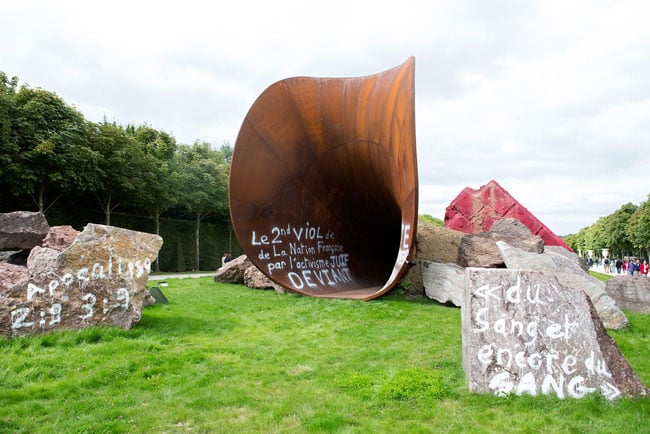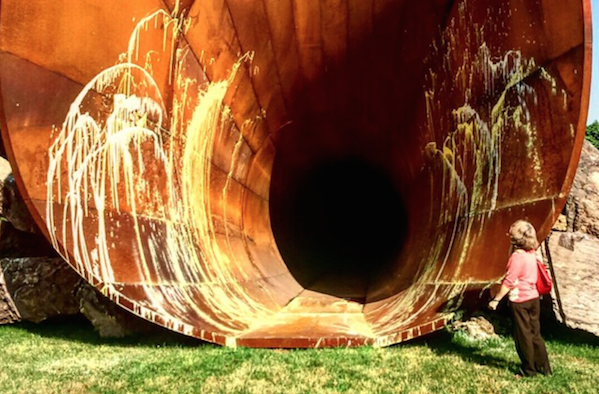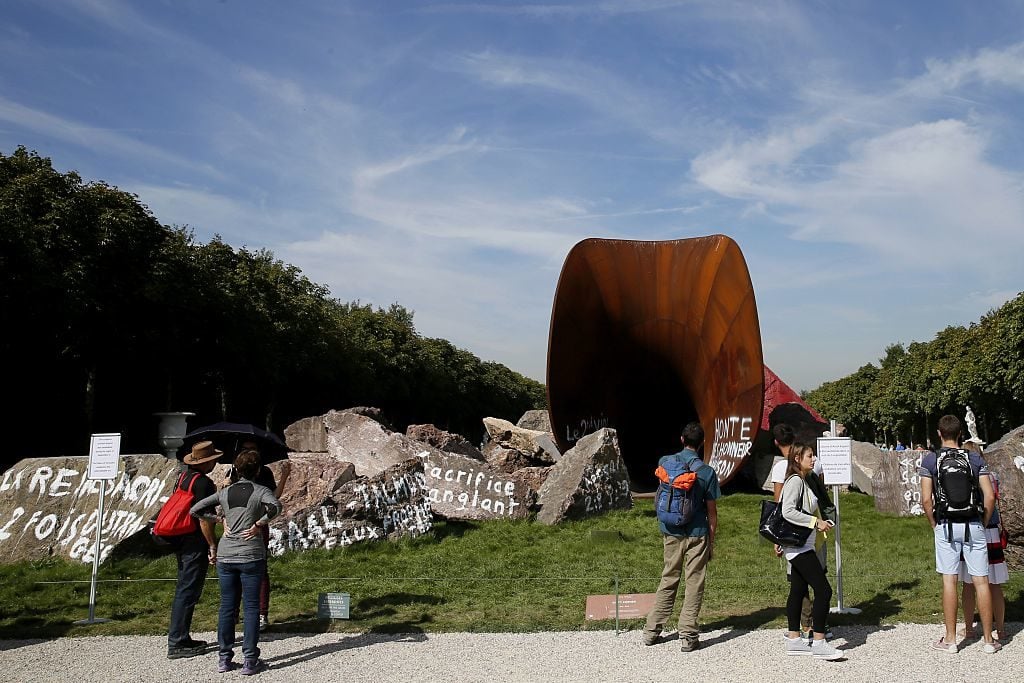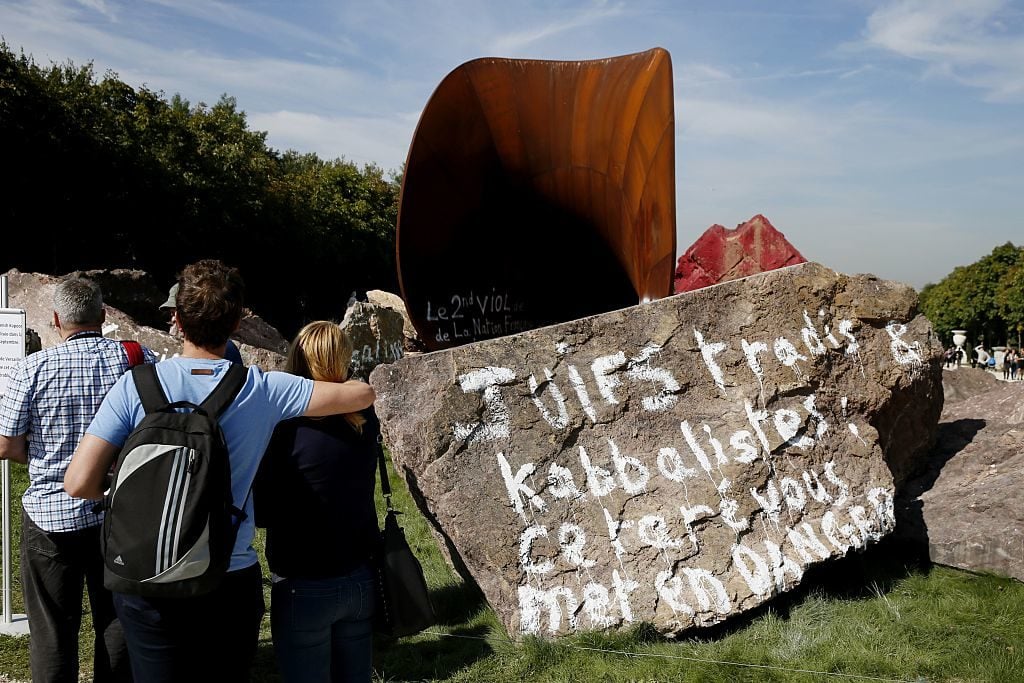Law & Politics
Anish Kapoor Claims Vandalization of His Versailles Sculpture Was Politically Motivated


Sarah Cascone

In the wake of the vandalization of his controversial sculpture Dirty Corner (2011), Anish Kapoor has responded by writing a column for the Guardian, decrying the violent act against his work and waxing philosophical on art’s potentially disruptive nature.
The artist blames the “vicious voice of the few” for dominating the debate over the piece and inspiring the vandal’s actions. Kapoor wonders if his best response to the crime is to remove the paint thrown on the work, or to let what he believes was “politically-motivated vandalism” become part of the piece.

Unknown vandals splattered yellow paint on Kapoor’s Dirty Corner (2011).
Photo: @walkergarden via Instagram.
“Can I, the artist, transform this crass act of political vandalism and violence into a creative act? Would this not be the best revenge?” he asks.
A photo accompanying the article does show workers scrubbing the splattered paint away, so it appears Kapoor has already made the choice to return the artwork to its original state.

People look at the grafitti inscribed artwork by British-Indian artist Anish Kapoor entitled “Dirty Corner” in the gardens of the Chateau de Versailles in Versailles on September 11, 2015, a day after the artwork was emblazoned with grafitti for a third time. A controversial sculpture by British artist Anish Kapoor on display in the gardens of France’s Palace of Versailles has been vandalised for a third time, with graffiti saying “respect art” scrawled on it, the royal chateau said. Courtesy of Patrick Kovarik/AFP/Getty Images.
In the attempted destruction of the artist’s mammoth piece, which he controversially referred to as a vagina, sparking the current unrest, Kapoor potentially sees “the dirty politics of exclusion, marginalization, elitism, racism, [and] Islamophobia.” What? Islamaphobia? Really, how?
Kapoor does admit that Dirty Corner was meant to conflict with its palatial setting, and is to some extent an act of artistic violence against Versailles.
“It engages in a disruptive conversation with the palace’s geometric rigidity. It looks under the carpet of [Andre] Le Nôtre’s tapis vert and allows the uncomfortable, even the sexual,” he notes.

People look at the grafitti inscribed artwork by British-Indian artist Anish Kapoor entitled Dirty Corner in the gardens of the Chateau de Versailles in Versailles on September 11, 2015, a day after the artwork was emblazoned with grafitti for a third time. Courtesy of Versailles Patrick Kovarik/AFP/Getty Images.
At the same time, Kapoor has denied that there is any similarity between Dirty Corner and another recently controversial public sculpture in France, Paul McCartney’s overtly sexual Tree.
The artist draws a distinction, however, between his brand of artistic violence, which may make its audience uncomfortable but hopes to promote new ideas and possibilities, and political violence, which looks only to censor and destroy, even when its weapon is paint, rather than a bomb.
“Simplistic political views are offended by the untidiness of art,” Kapoor concludes. “Art is seen as obscene and destroyed.”
Interested in Anish Kapoor and Asian Contemporary Art? Check out the Asian Contemporary Art Sale now on Artnet Auctions.